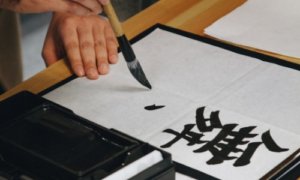Learn Mandarin Chinese with these resources
To learn Mandarin Chinese, you’re going need a way to learn correct pronunciation, a frequency dictionary to form your base vocabulary, and a good grammar book. You’ll also benefit from a thematic vocabulary book for specialized vocabulary and maybe a book or two, once you learn your first 1000 words. Make sure you read the Method sections of the website, then check out some of these recommended resources (pictures are links):
Pronunciation and Pinyin
Note: As a faster (and more effective) alternative to the following pronunciation resources, check out my Kickstarter project. It will make the first steps of Chinese much easier for you, because it takes advantage of how your brain works (and how to re-wire it) in a way that traditional tools just can’t.
First off, get a feel for how pronunciation works in English. The video tutorials here should help. Once you understand that, start working on Chinese. Do not skip this step! The Chinese tone system and many of the sounds are extremely difficult to the ears of English speakers, and if you can’t hear the difference between different Chinese words from the beginning, you’re going to have a much harder time on what is a very difficult language. McGraw-Hill has one of the only books I’d recommend on this. It comes with a CD with videos and mp3s (Mac and PC compatible, according to their website). If you want to jump to free internet resources, check out Wikipedia’s Chinese Phonology page and Chineselearner.com’s Pinyin guide with recordings (the Chineselearner site is really neat!). There’s a wonderful tone trainer over at Pinyin Practice that should help with learning to recognize tones, thanks to Stephen for suggesting the link. Pinyin Practice also has great resources for Finals, also known as vowels & rare final consonants and Initials, also known as consonants at beginning of word.
Anki language learners community on Reddit. You can even check out this Anki language learning blog for other Anki tips and tricks for learning French.”}” data-sheets-userformat=”{“2″:513,”3”:{“1″:0},”12″:0}”>If you have more questions about studying with Anki flashcards and learning Chinese pronunciation or vocab, there’s also the Anki language learners community on Reddit. You can even check out this Anki language learning blog for other Anki tips and tricks for learning Chinese.
Your base vocabulary
I’ve made a base vocabulary list of 625 words to start you off! As I talk about in that article, I find it easiest to translate those words using the short dictionaries at the end of a Lonely Planet Phrasebook; they’re cheap, short and give you good, standard translations for your words (just ignore the ridiculous pronunciation guides). Later, when you’re ready for sentences, you can go back to your phrasebook and grab some. After that, try some of these resources:
The Routledge Frequency dictionary series is excellent, with example uses and everything. Get this at the beginning to direct your vocabulary work! There are some online frequency lists that aren’t half bad. This site contains the characters needed for the HSK Chinese proficiency tests levels 1-4, which should be enough to get you started. Learning to read Chinese characters is a particularly difficult skill set, because it’s fairly separate from the other language skills; you can reach full fluency in spoken Chinese and remain totally illiterate if you don’t work on it directly, since each word tends to have its own character, and those characters don’t contain any information about the pronunciation of the word. You’ll need to learn at least 1500 of them to get decent reading proficiency.
This is all complicated by the fact that there are two (similar) writing systems – Simplified and Traditional. Simplified is mostly used in mainland China, and Traditional in Taiwan, Hong Kong, and Macao. Simplified uses less strokes for each character, and so is easier to write, while the traditional characters may be easier to read. Here’s an article about deciding whether to learn Simplified, Traditional or both. Also be aware that if you’re hoping to learn Japanese at some point, Traditional is basically the same as the Kanji alphabet.
I wrote a blog post about some of the special difficulties you’ll encounter here. There are a couple of pretty well renowned books designed exclusively to help you memorize what the first 1500 characters look like. Remembering Traditional/Simplified Hanzi by James W. Heisig breaks the characters down into their component parts and provides mnemonics for remembering them.
You can also access ready-made Chinese Anki decks to boost up your Chinese vocabulary which is recommended, as it could save you time and get you started faster.
Grammar book
The Integrated Chinese series is pretty well regarded, and comes in Traditional and Simplified variants.
A reader has suggested This Awesome Site that is a wiki for Mandarin Chinese grammar.
Book-type book
You can read anything that you enjoy. I’m a big fan of the Harry Potter series in translation, especially if you can find an audiobook version to listen to at the same time as reading. A reader told us about this site, where it appears you can buy the complete series in simplified Chinese.
Other
Blogger Suggestions
Learn Mandarin Now recently did a survey of a bunch of bloggers and teachers, asking them what tools they recommended for Chinese. While many of them do rely on translations, I think it’s worth a look. (Here is the original research page for the infographic.)
Assimil
The Assimil series is a sort of special language learning resource that I discuss in a blog post here. It doesn’t quite fit into any of the categories above, and I think it works best as a sort of supplemental source of Chinese input. Here’s the beginner Chinese version with CDs. Reviewers have indicated that the Chinese edition isn’t quite as good as some of the other editions,but that the Chinese texts are still good, if a bit basic. Given the difficulty of the language, I’m still going toendorse it, since more, thoughtfully designed input is still going to help.
Dictionarist
Dictionarist provides translations, example sentences, conjugations, and synonyms for a number of languages including Chinese.
Utilities
For converting from Pinyin to Chinese characters and back, I would recommend Chinese-Tools— It’s pretty user friendly, and has some dictionary tools connected with it. But generally, you’re probably going to want to learn how to type in Chinese on your computer, without the aid of a web-app. This turns out to be pretty easy, since you can set your computer up such that you’ll type in Pinyin (“zhong-wen”) and it will spit out Hanzi (中文) automagically. For instructions on setting this up, go to Pinpin Chinese (for Macs) and Pinyin Joe for PCs (Instructions for Windows 7/Vista and Windows 8).
Mandarin
Scritter.cn is currently one of the better trainers, for teaching you to write Hanzi.
A reader shared two cool resources with us: Mandarin Poster, which sells posters of Chinese characters, and another site that focuses on using movies as a learning tool.
Update, 2-2-16: My Anki card models for Japanese (and the ones I’d use for Chinese) have been evolving over the past year. I’ve been posting new versions in a number of blog updates, but I figured it’d be good to combine everything into one deck. You can download that model deck here. The minimal pairs, spelling cards and basic mnemonic cards are the same as my normal model deck, but I’ve added Mnemonics for Radicals (explained here – and you might want to switch up the pictures and mnemonics if you’re learning Chinese, rather than Japanese), an extra type of mnemonic card that better supports mnemonics for Kanji/Hanzi characters, and last, an All Purpose Japanese/Chinese card that you can use for Picture Words and sentences alike (explained here).
Try the Fluent Forever App
By the way, did you know the book is now an app. Check out our Fluent Forever app!
Discover our immersive method rooted in neuroscience designed to take you to fluency in < 30 minutes a day through four steps:
- 1. Train your ears with pronunciation lessons.
- 2. Learn vocabulary through images instead of translations.
- 3. Learn grammar naturally through stories relevant to you.
- 4. Practice your speech to fluency with native tutors.
Check out our Fluent Forever app!




